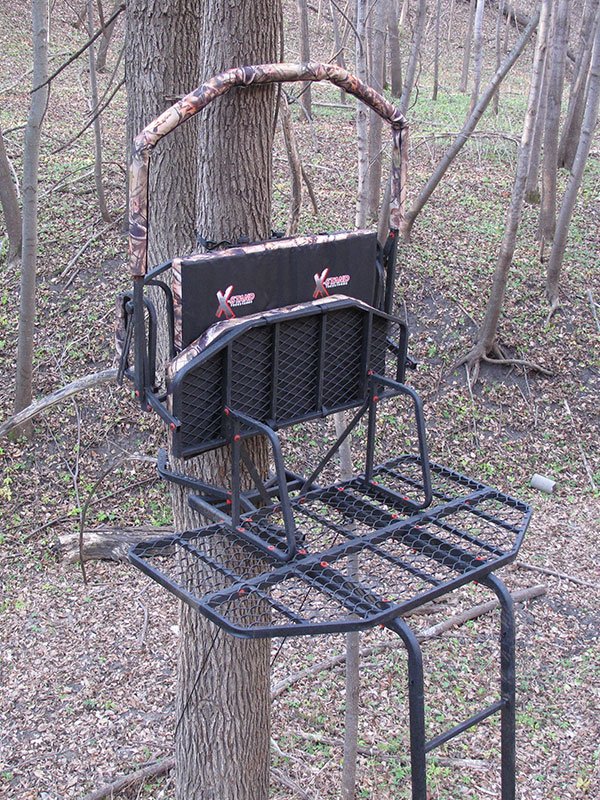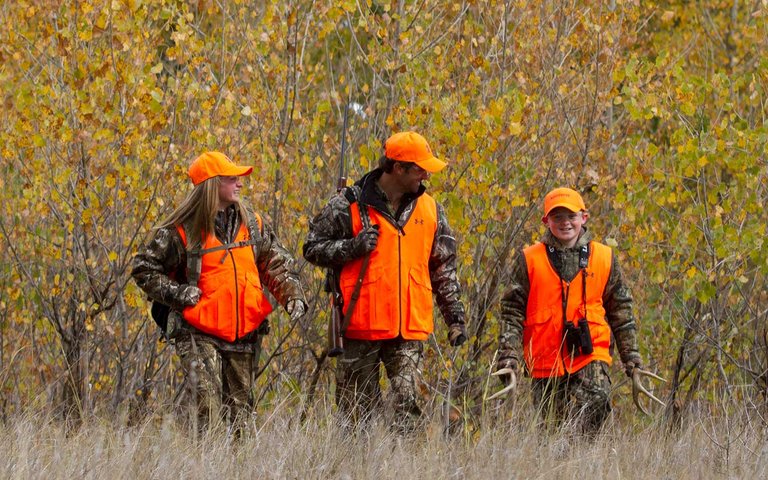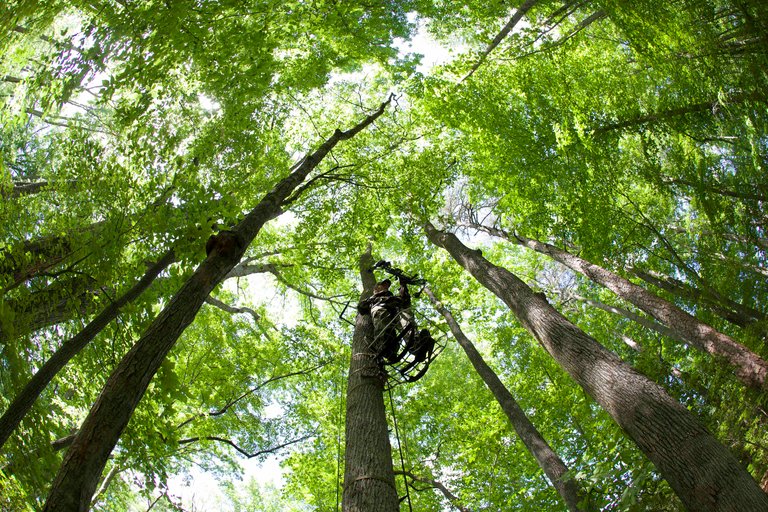Tree Stand Safety: The ABC's You Need to Know
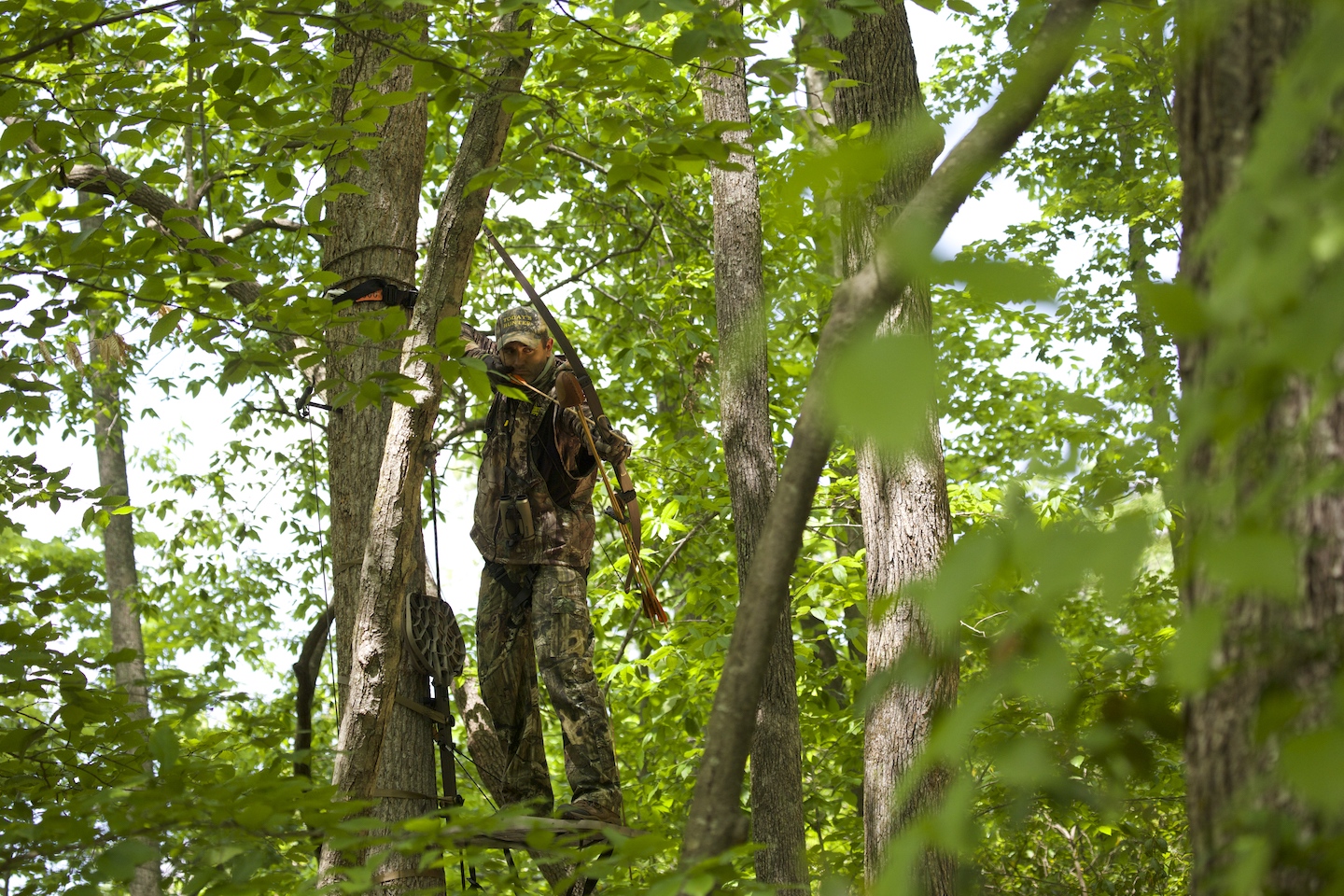
As kids, we all grew up learning our ABCs. Many educators and marketing professionals use it as a pneumonic for teaching the steps to a process or for learning a new concept. In this case, it’s the ABCs of tree stand safety that we want to remind hunters about. Hunting from a manufactured tree stand built to standards recognized by the Treestand Manufacturer’s Association (TMA) is a very safe way to hunt as long as you follow the manufacturer’s instruction and safety guidelines. When you don’t follow the instructions or when you use home-made stands, you expose yourself to unnecessary danger. Learning and practicing the ABCs of tree stand safety will help keep you safe when using your stand.
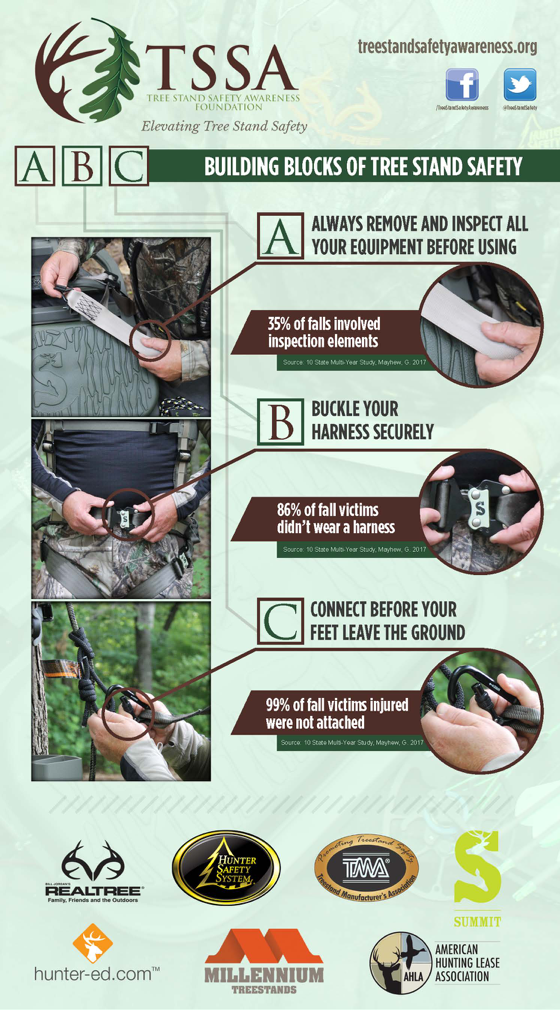
The first letter, A, stands for Always. Always remove and inspect your stands and equipment before using it. In a recent study conducted by the TSSA, almost 700 tree stand falls (or approximately 1/3 of all falls) may have been prevented if the hunter had just inspected the equipment and followed the manufacturer’s recommendation for preventative maintenance. The typical scenario was that a hunter had left the stand in place after the season and did not remove and inspect it. The straps attaching the stand to the tree undergo a lot of combined stress from tree growth, UV rays from the sun, weather, and other factors. Over time these factors can weaken the strap(s) and cause them to fail if not adequately maintained or replaced. As hunters we must remember to remove our stands and perform preventative maintenance as suggested by the manufacturer.
The second letter, B, stands for Buckle. Buckle on your harness securely every single time before your feet leave the ground. This includes putting stands up, taking them down, and hunting from them. The full-body harness is light weight and easy to use. With practice the hunter can put one on in less than a minute and it is comfortable enough to wear all day on the stand. In the study mentioned previously, 86% of fall victims did not have on a full-body harness. The remaining 14% had a harness on or with them, but were not attached at the time of the fall. Remember, never take your harness off or detach while elevated.
This brings us to the final letter, C, which stands for Connect. Connect before your feet leave the ground. For the full-body harness to work, it must be connected to the tree at all times by the tether or a linesman belt. Analysis from the same study found that 99% of all fall victims were not attached at the time of the incident. The harness did its job for the remaining 1%, arresting the fall and keeping the hunter from impacting the ground. Many hunters only attach once they reach the platform of the stand. This practice leaves you vulnerable during the climb up and down and during transfer to the stand with some stand types. In fact, the research found that more than half of falls happened during the climbing (ascent and descent) and transfer phases including ladder and climbing stands. Keeping the harness attached while setting up a stand, taking the stand down, and hunting is the only way to stay fully protected.
Regardless of what type of stand you use or how long you have been hunting, following the ABC’s of Tree Stand Safety will help ensure you come home safe from the hunt. Below are some additional safety practices to follow when using a tree stand:
- Let someone know where you will be hunting and what time to expect you back
- Practice at ground level with your stand
- Never climb if sick, taking medications that may cause dizziness or sleepiness
- Select a proper tree to climb
- Never climb using limbs
- Use a haul line to raise and lower your equipment
- Have a self-rescue plan if you fall and are suspended
- Have a signaling device such as a cell phone or whistle on your person
- Glen Mayhew

